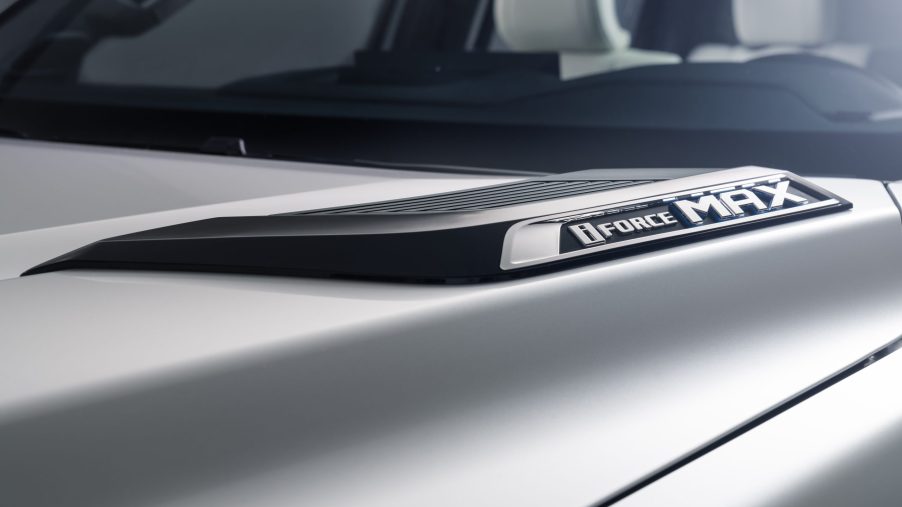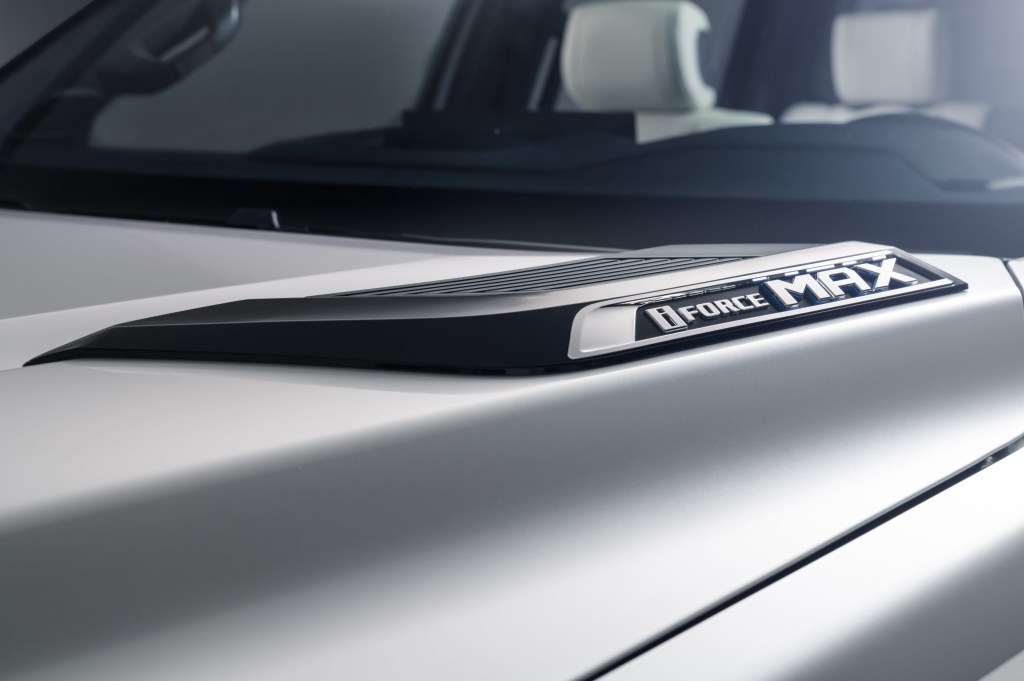
Kick Rocks, V8: The Best Toyota Engine is a Twin-Turbo Hybrid V6
The V8 engine holds a hallowed status in automotive culture, from powering stock car racers to ruling over Valhalla in certain sci-fi film franchises. It’s no surprise – V8s have long been the choice for simple, affordable, durable power. But new technology has it on the ropes. Turbocharging and electrification are helping smaller engines achieve equivalent power with better fuel economy. Toyota’s new i-FORCE MAX twin-turbo V6 hybrid powertrain is a perfect example of the movement. Not only has it replaced V8s in Toyota’s lineup, but it’s also simply the best Toyota engine available today. Toyota and Lexus should put it in everything.
What is the i-FORCE MAX Hybrid powertrain?

Toyota developed the i-FORCE MAX hybrid engine to replace its V8. The powertrain comprises a 3.4-liter V6 gas engine with twin turbos and a 1.87-kwh battery with an electric motor.
Surprising (probably) to no one, the new turbo hybrid powertrain is far more fuel efficient than the 5.7-liter V8. Per Toyota, the new 2023 Sequoia with standard i-FORCE MAX can reach up to 24 mpg highway. That’s a far cry from the paltry mid-teens fuel economy of the previous Sequoia. But while efficiency gains are undoubtedly helpful, Toyota’s employment of hybrid tech for its new SUVs and trucks engines has even more gains in the power department.
It may be smaller than the outgoing 5.7-liter Toyota V8 that found use in everything from the base Tundra to the fully-loaded Land Cruiser, but the i-FORCE MAX is no slouch. In fact, it’s every bit as powerful as the old V8. Road & Track reports a combined power output of 437 horsepower and 583 pound-feet of torque in its Tundra application. That’s 48 more horsepower and 104 more pound-feet of torque than the V8.
Other Toyota SUV and truck engines are getting long in the tooth
Toyota is notorious for longevity. The brand goes well out of its way to keep its reputation for reliability – like keeping engines static for a decade or more. While sticking with engine designs for decades can help with durability and ease of maintenance, eventually, all powertrains need to be updated.
That process has come to bear on a few Toyota powertrains.
Toyota started using the 5.7-liter 3UR-FE V8 all the way back in 2007. A 16-year run has helped the motor earn a reputation for outstanding durability along with its other UR V8 siblings. Models like the Sequoia, Land Cruiser, and Tundra carried the V8 with pride. But despite its reliability, the V8 did start to fall short of its competitors. Heck, Ford began introducing turbocharged V6 engines for the F-150 a decade ago while the Toyota 5.7-liter unit kept on chugging.
While other manufacturers started coaxing efficiency numbers in the 20s from their trucks and SUVs, the Toyota V8 gained a second reputation for horrific fuel mileage. Years of real-world testing and personal anecdotes paint one picture – good luck getting your Toyota V8 out of the mid-teens for mpg. It was past time for a change by the time Toyota announced the i-FORCE MAX hybrid powertrain in 2022.
The old V8 isn’t the only Toyota engine showing its age. While the V8 has gone away, Toyota continues using a pair of V6 engines with the same reliability-to-efficiency payoff. The 3.5-liter naturally-aspirated V6 is still in use with the aging Tacoma midsize truck, while competitors have moved to forced induction. Toyota’s megalodon of a 4×4 SUV, the 4Runner, uses a 4.0-liter V6 and five-speed automatic transmission that dates back to the mid-2000s.
The best Toyota engine is fantastic in operation
So, Toyota’s hybrid-turbo V6 looks excellent on paper compared to the OEM’s other aging powertrains. But it’s all for naught if the modernized engine doesn’t perform well in the real world.
Thankfully, it does.
Climb into the cab of either the 2023 Sequoia or the 2023 Tundra, and you’ll get a feel for the i-FORCE MAX powertrain – even from the passenger side. Despite their ample size and weight, the engine’s immediate torque delivery pushes the sister trucks with gusto. The electric motor and turbos seem to fill in for each other where power gaps otherwise might exist.
It sounds great, too. Whether natural or (more likely) via Toyota’s intentional tuning, the i-FORCE MAX hybrid sure sounds like a V8 in both the Sequoia and Tundra. You’ll hear a hearty rumble from the engine bay instead of a V6 fizz. Toyota has done a great job of making a smaller, more efficient powertrain that emulates the feeling of an old-school V8.
Perhaps even more impressive is the engine’s use in the jewel of the Toyota SUV lineup: the new Lexus LX600. With the Land Cruiser now absent from the U.S. market, the Lexus LX600 is its rebadged surrogate. The Lexus Land Cruiser replaced its V8 with the turbo-hybrid V6 – just like the Sequoia and Tundra.
But it’s different in this case. While the Tundra and Sequoia do their best to emulate a V8 experience, the Lexus LX600 shows the i-FORCE MAX’s true colors. There’s no simulated exhaust burble – it doesn’t roar under acceleration. Instead, the Lexus version surges smoothly under power, much like an inline six or V8 from other luxury brands. Power delivery is linear – a firm hand pushing you and your 6,000-pound luxury yacht ever forward into more powerful, more efficient waters.
Toyota should use its best engine in as many models as possible
The i-FORCE MAX powertrain is a new chapter for Toyota and Lexus. It isn’t every day brands known for sticking to tried-and-true engineering veer into new technology. It’s simply just a very good engine – and Toyota should use it in everything.
Ground-up redesigns for the Tacoma and 4Runner are on the horizon. Toyota has an excellent opportunity to rival Ford’s Raptor models by throwing the i-FORCE MAX into its midsize truck and 4×4 SUV. Shoot, Toyota should even toss families a bone and put it in the Sienna and Grand Highlander. Lexus F-sport models and the GX SUV could get a serious performance boost from the i-FORCE MAX on the luxury end.
Will the twin-turbo hybrid Toyota V6 be reliable?
There’s only one actual gray area for the i-FORCE MAX hybrid powertrain, and it’s precisely what makes Toyota SUVs and trucks popular in the first place. Only time and miles will tell if the new engine can live up to Toyota’s longstanding reputation as the industry benchmark for reliability. There’s undoubtedly more complexity to keep in mind. Until numbers and anecdotes arrive, we’ll see how far Toyota can go with the i-FORCE MAX in its lineup.


